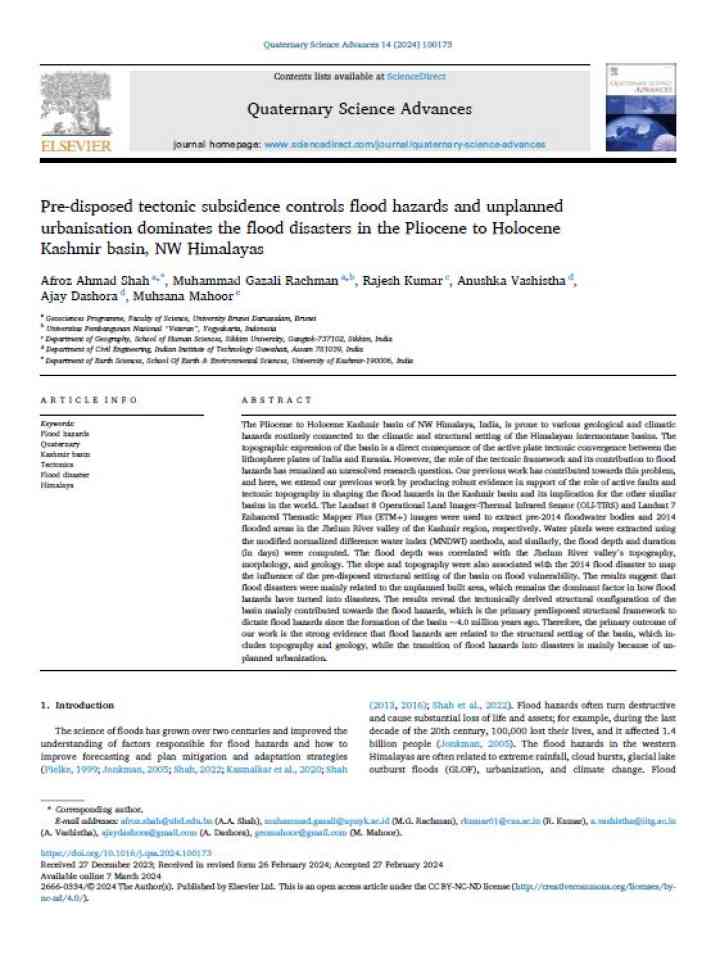Pre-disposed tectonic subsidence controls flood hazards and unplanned urbanisation dominates the flood disasters in the Pliocene to Holocene Kashmir basin, NW Himalayas
In this study, the authors extend their previous work by producing robust evidence in support of the role of active faults and tectonic topography in shaping the flood hazards in the Kashmir basin and its implication for other similar basins in the world. The Landsat 8 Operational Land Imager-Thermal Infrared Sensor (OLI-TIRS) and Landsat 7 Enhanced Thematic Mapper Plus (ETM+) images were used to extract pre-2014 floodwater bodies and 2014 flooded areas in the Jhelum River valley of the Kashmir region, respectively. Water pixels were extracted using the modified normalized difference water index (MNDWI) methods, and similarly, the flood depth and duration (in days) were computed. The flood depth was correlated with the Jhelum River valley's topography, morphology, and geology.
The slope and topography were also associated with the 2014 flood disaster to map the influence of the pre-disposed structural setting of the basin on flood vulnerability. The results suggest that flood disasters were mainly related to the unplanned built area, which remains the dominant factor in how flood hazards have turned into disasters. The results reveal the tectonically derived structural configuration of the basin mainly contributed towards the flood hazards, which is the primary predisposed structural framework to dictate flood hazards since the formation of the basin ∼4.0 million years ago. Therefore, the primary outcome of our work is the strong evidence that flood hazards are related to the structural setting of the basin, which includes topography and geology, while the transition of flood hazards into disasters is mainly because of unplanned urbanization.
Explore further

